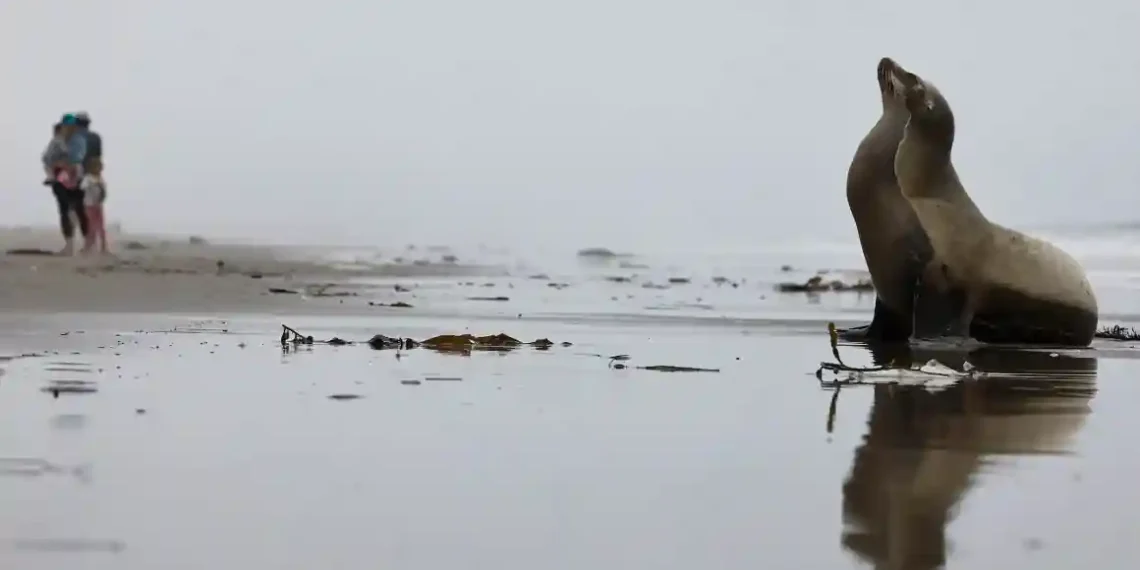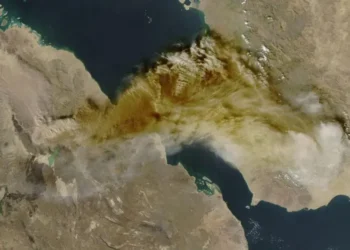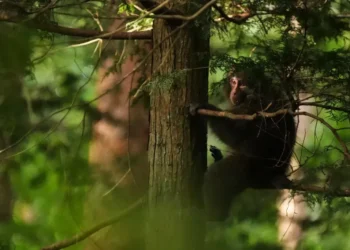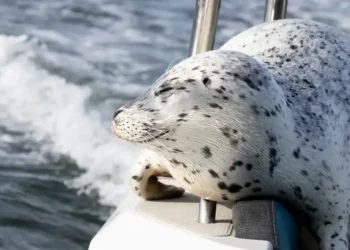Sea Lions Attacking Humans Off California Coast: Here’s What’s Behind It
Along 70 miles of Southern California’s coastline, sea lions—typically known for their playful and curious nature—have become increasingly aggressive, attacking swimmers and surfers in the water. Experts believe these unusual incidents are linked to a rise in poisoning caused by toxic algal blooms in the ocean, a problem that’s having a severe impact on marine life, especially sea lions.
On March 30, 15-year-old Phoebe Beltran was swimming near Long Beach when she was attacked by a sea lion. “I was so scared, I couldn’t believe what was happening. The pain in my arm was intense,” Beltran shared. Despite suffering bites, bruises, and scratches, she did not need stitches.
Just a week earlier, a surfer near Oxnard had a terrifying encounter with a sea lion. RJ LaMendola described the attack as “feral” and “demonic,” with the sea lion charging toward him at top speed. It stalked him all the way back to shore, a behavior he had never seen in the normally playful creatures.
But what’s driving these aggressive actions? Experts point to domoic acid toxicosis, a poisoning caused by toxic algal blooms in the ocean, also known as “red tide.”
Domoic acid is a naturally occurring toxin that enters the food chain when it’s produced by toxic algae. It affects marine life, particularly apex predators like sea lions. When consumed, the toxin causes neurological damage, making the sea lions disoriented, fearful, and aggressive. “When they’re affected by the toxin, they become completely disoriented, struggling to breathe or even stay afloat,” explains John Warner, CEO of the Marine Mammal Care Center in Los Angeles.
Sea lions exposed to high levels of the toxin experience seizures, one of which, called “stargazing,” makes them stretch their necks unnaturally. This disorientation leads to heightened aggression, with the animals sometimes attacking people who get too close. The poison is especially deadly because it affects their ability to think clearly, causing them to react with fear and panic.
The toxic algae blooms are not just a random occurrence. They are being worsened by climate change. Rising ocean temperatures and nutrient pollution from agricultural runoff are creating ideal conditions for these blooms to thrive. Once a rare phenomenon, these blooms now happen every year, causing toxic levels of domoic acid to surge in the ocean, which affects marine life on an unprecedented scale.
Warner notes that the warmer ocean surface combined with excess nitrogen in the water from farming is fueling these blooms. While the algae has always existed in the ocean, the blooms have become much more frequent and severe due to human impact on the environment.
This year’s bloom has been particularly severe, with over 2,000 calls to the Marine Mammal Care Center in just five weeks. Last year, the center reported the worst algae event in recorded history in Southern California, and this year’s bloom appears to be even worse.
While sea lions and dolphins are the most affected, other marine animals, including birds and whales, are also impacted. Unfortunately, the recovery rate for sea lions this year is lower than previous years due to the higher toxicity levels in the water. Approximately 50% to 65% of sea lions exposed to the toxin recover, but many are struggling longer than usual, and some may not survive.
Pregnant sea lions are particularly vulnerable. Domoic acid can cause the mothers to expel their fetuses as a survival mechanism. The long-term effects on the sea lion population remain uncertain, but these events could have lasting consequences for the species.
The Marine Mammal Care Center is working tirelessly to treat affected sea lions. To flush the toxin out of their systems, they provide anti-seizure medications, fluids, and nutrition. They’re also caring for more animals than ever before, with a triage site set up in their parking lot to handle an additional 25 animals.
However, the situation is dire for dolphins, who do not recover from domoic acid poisoning. “There’s no rehabilitation for dolphins affected by this toxin. When they strand on the beaches, most are already dead,” Warner explains. This year, the center has had to euthanize more dolphins than ever before, with over 70 strandings in Los Angeles County alone.
The increasing frequency and severity of toxic algal blooms are a direct result of climate change and ecosystem disruption. As the planet warms, the ocean’s chemistry is changing, favoring algae growth and making the problem worse. Human activities, such as agricultural runoff and coastal development, are exacerbating the issue.
The sea lions and dolphins suffering from this toxic poisoning are a reflection of a broader environmental crisis. Climate change is altering the ocean’s ecosystem, putting the health of marine animals at risk and creating dangerous situations for humans who share the waters.
As the situation continues to unfold, experts hope that more research will shed light on how to mitigate the effects of these toxic blooms. For now, both sea lions and humans are facing the consequences of a changing climate, and the aggressive behavior from these normally peaceful animals serves as a stark reminder of the state of the ocean.
“It’s getting to the point where even the pups of elephant seals and sea lions are stranding in higher numbers,” Warner warns. As the Marine Mammal Care Center continues to treat affected animals, the focus remains on getting them back to the ocean safely. But as these blooms worsen each year, it’s clear that both marine life and coastal communities will need to adapt to a changing world.
This article was rewritten by JournosNews.com based on verified reporting from trusted sources. The content has been independently reviewed, fact-checked, and edited for accuracy, neutrality, tone, and global readability in accordance with Google News and AdSense standards.
All opinions, quotes, or statements from contributors, experts, or sourced organizations do not necessarily reflect the views of JournosNews.com. JournosNews.com maintains full editorial independence from any external funders, sponsors, or organizations.
Stay informed with JournosNews.com — your trusted source for verified global reporting and in-depth analysis. Follow us on Google News, BlueSky, and X for real-time updates.














